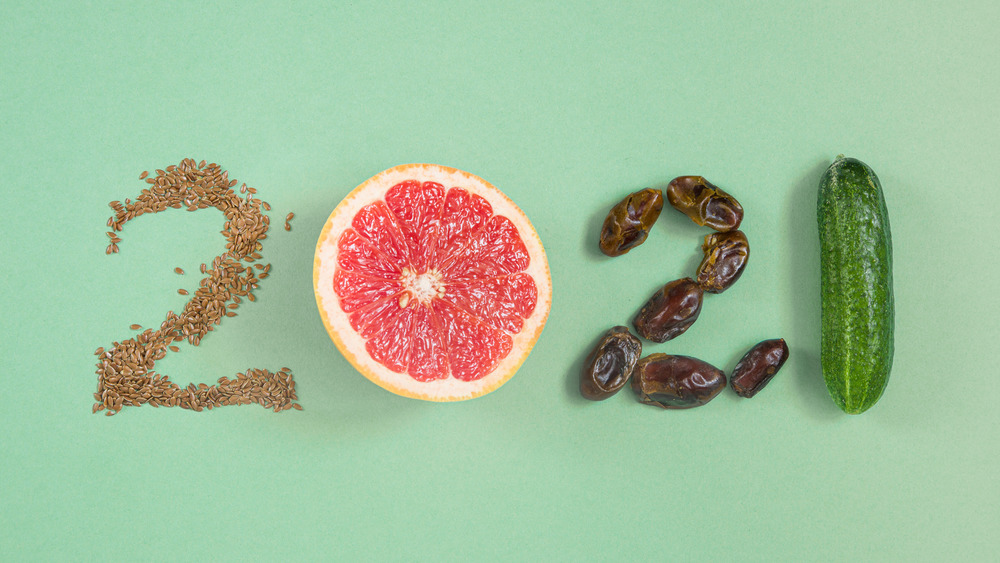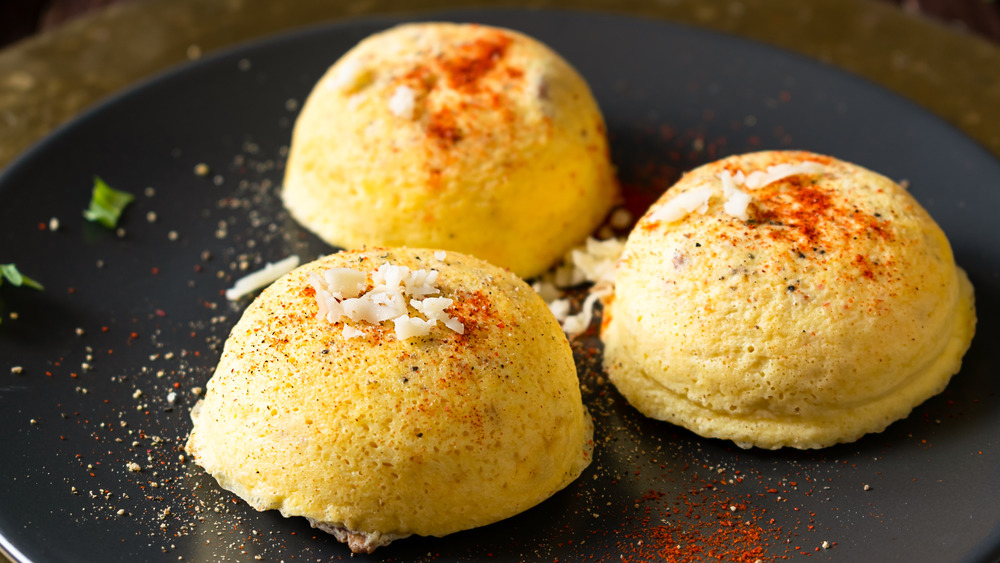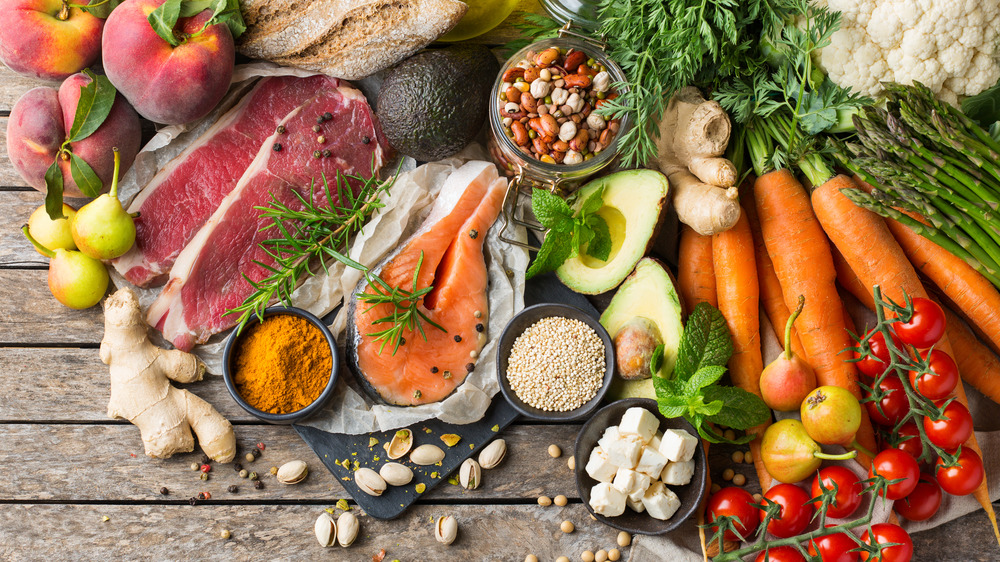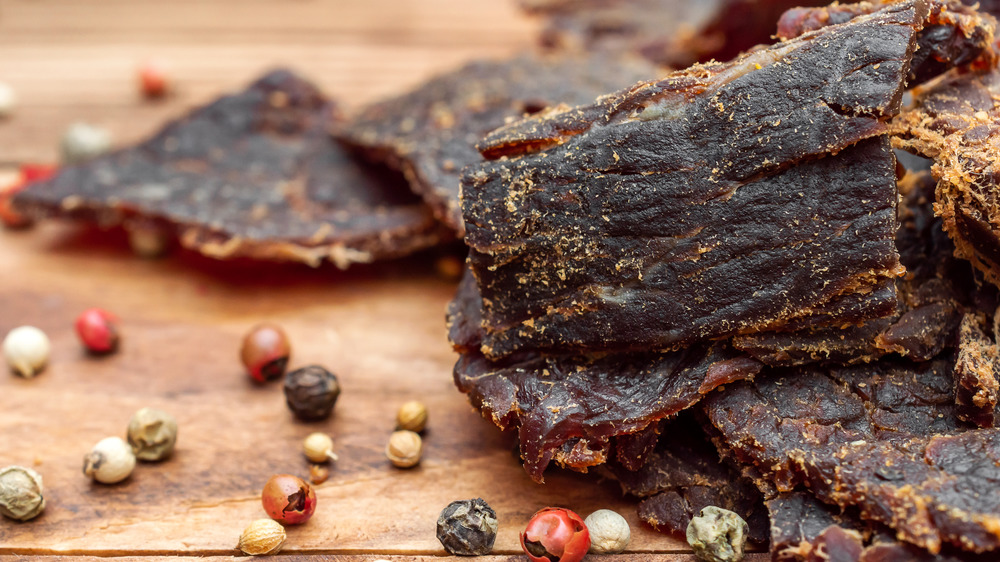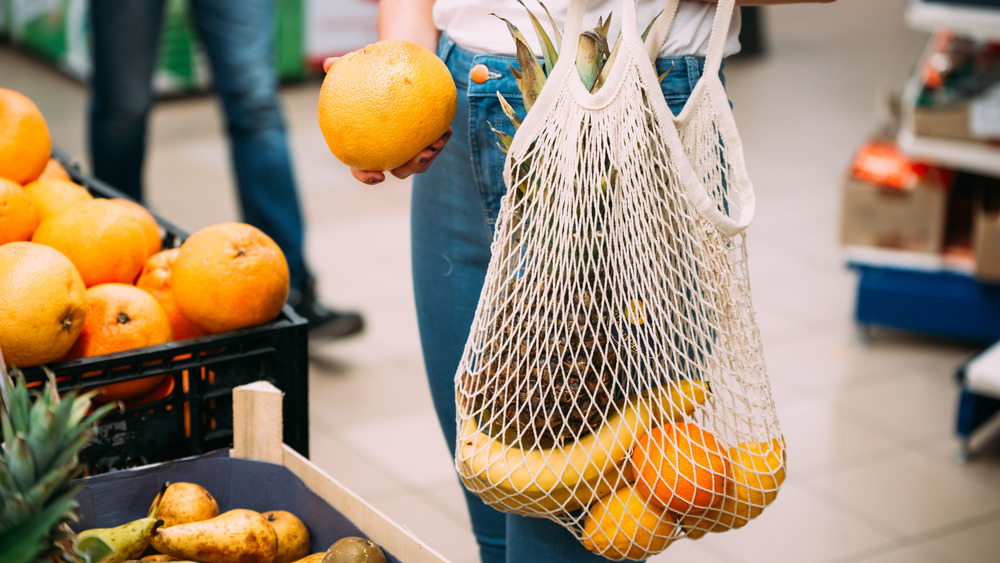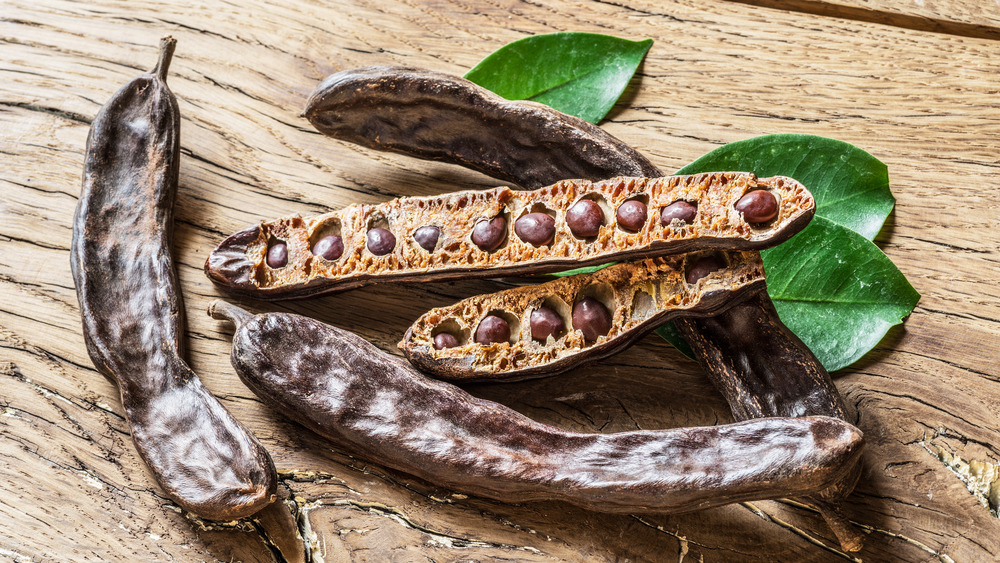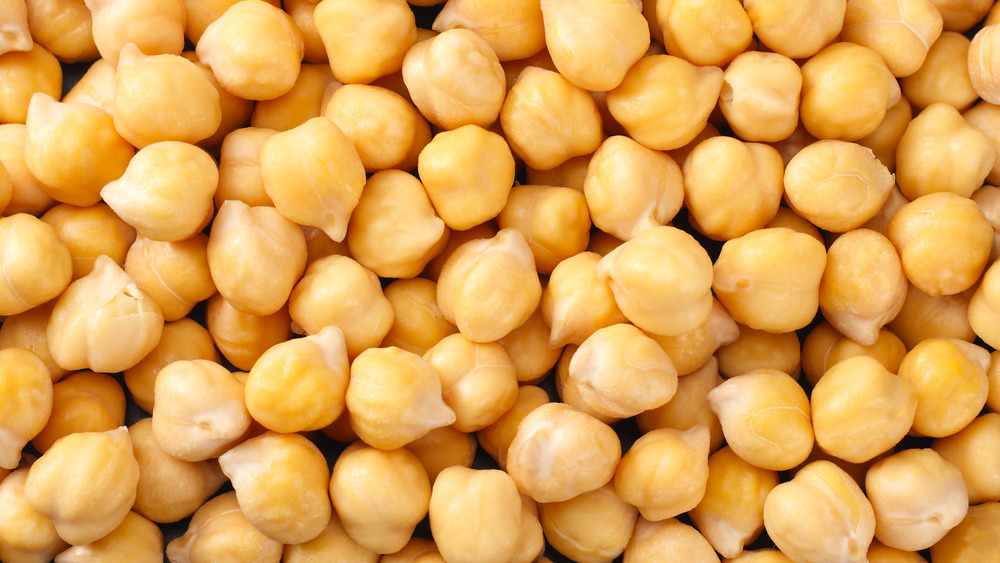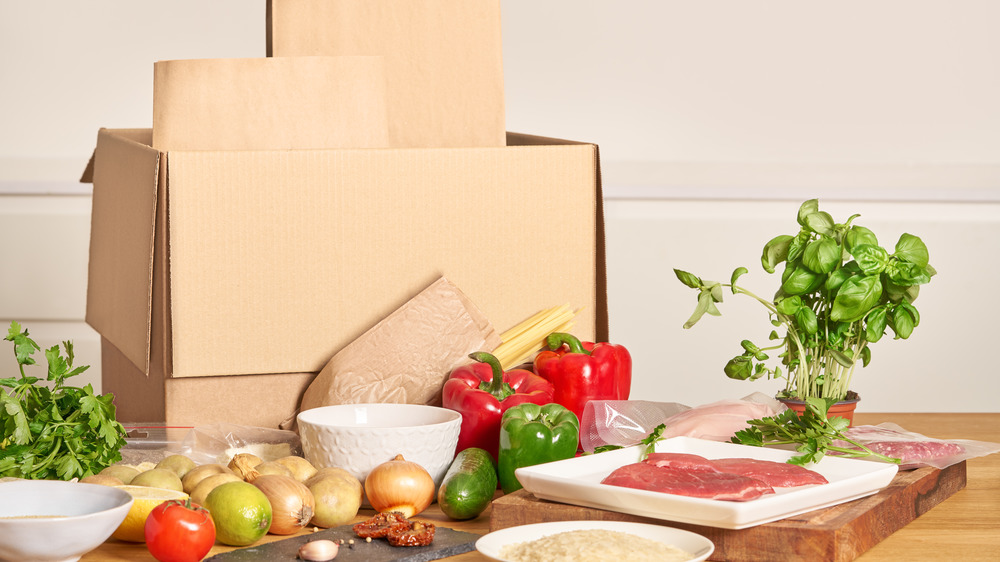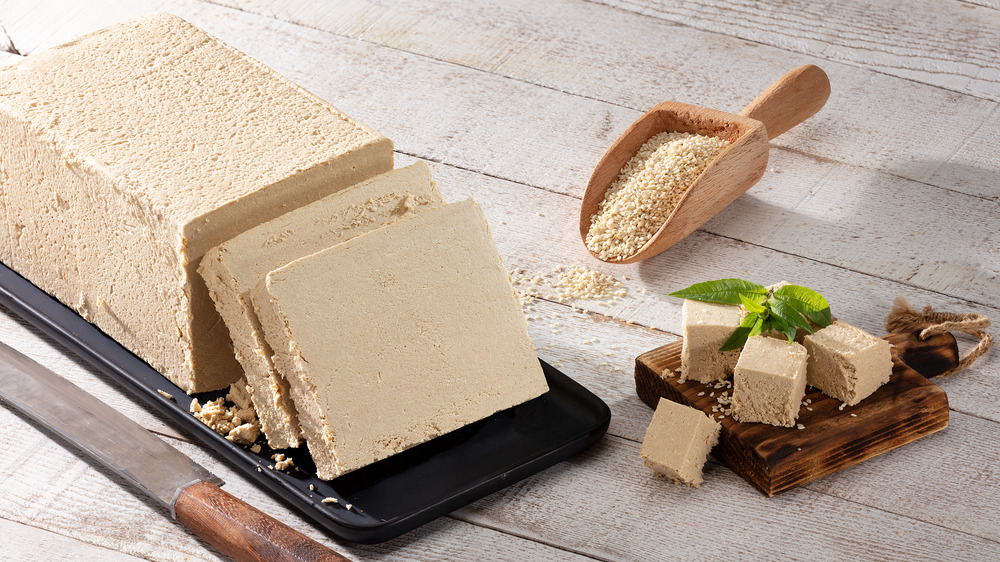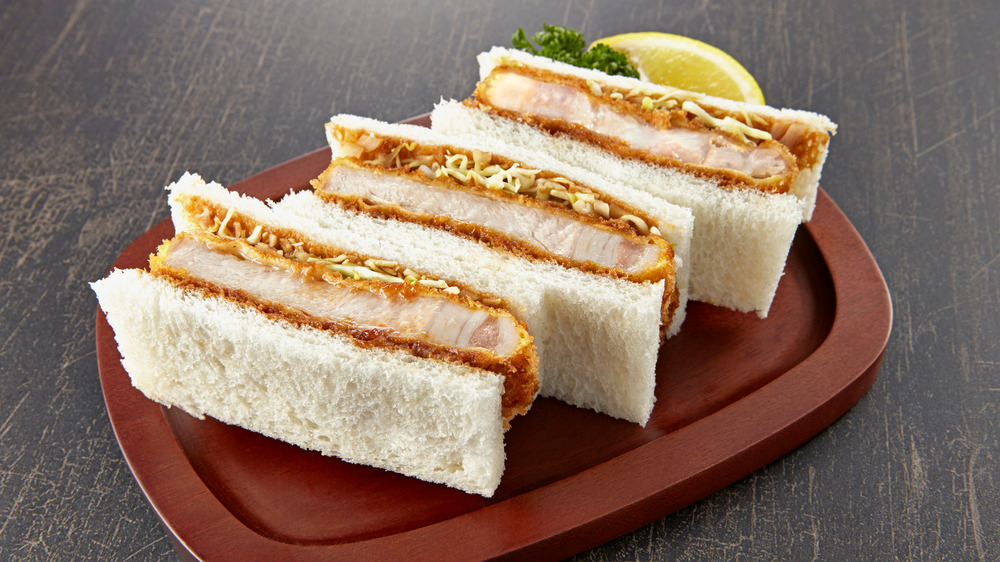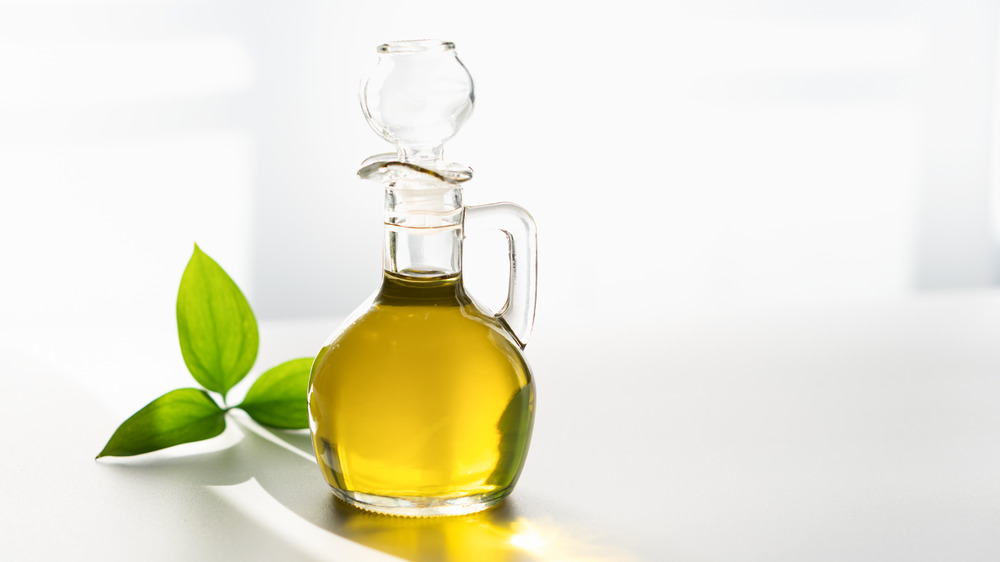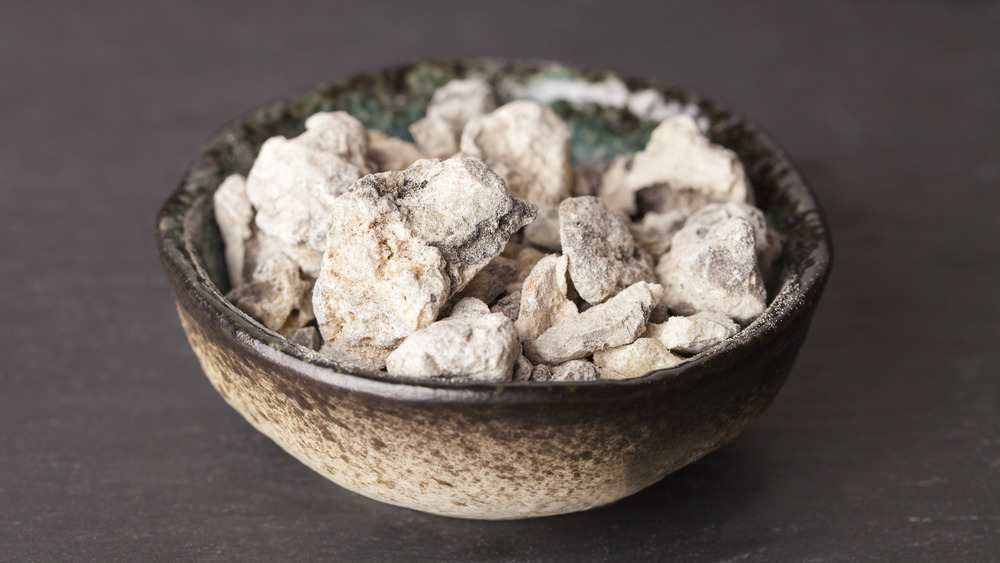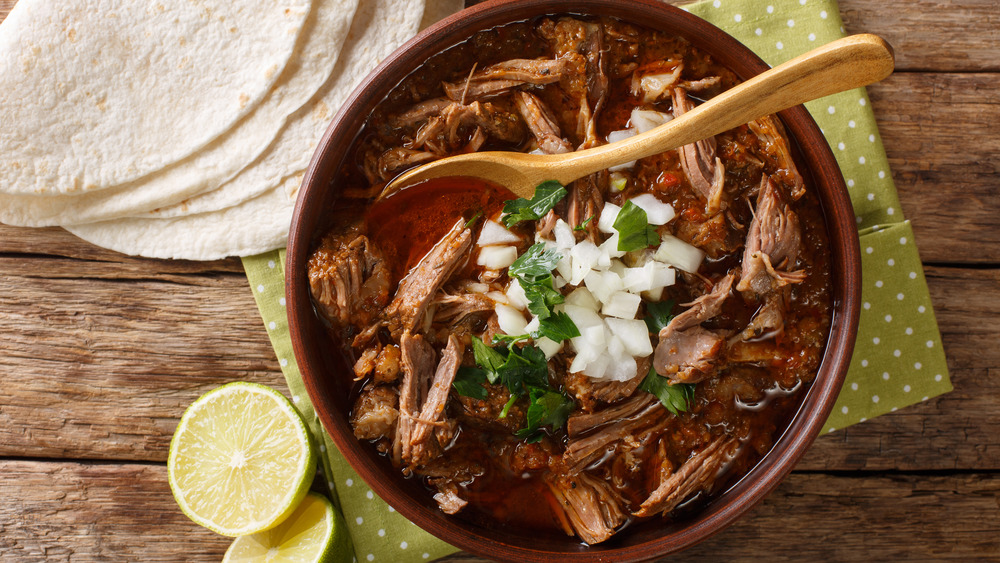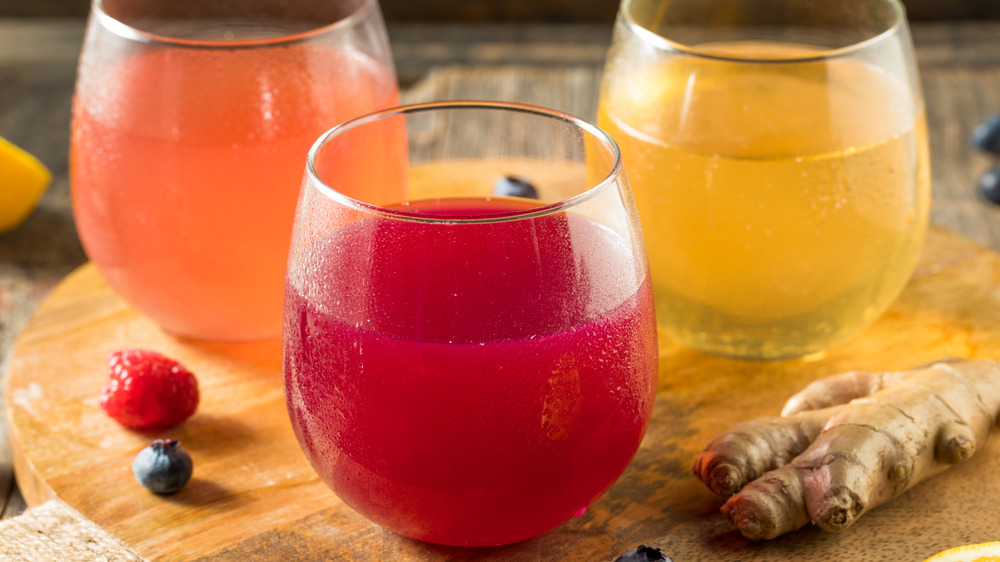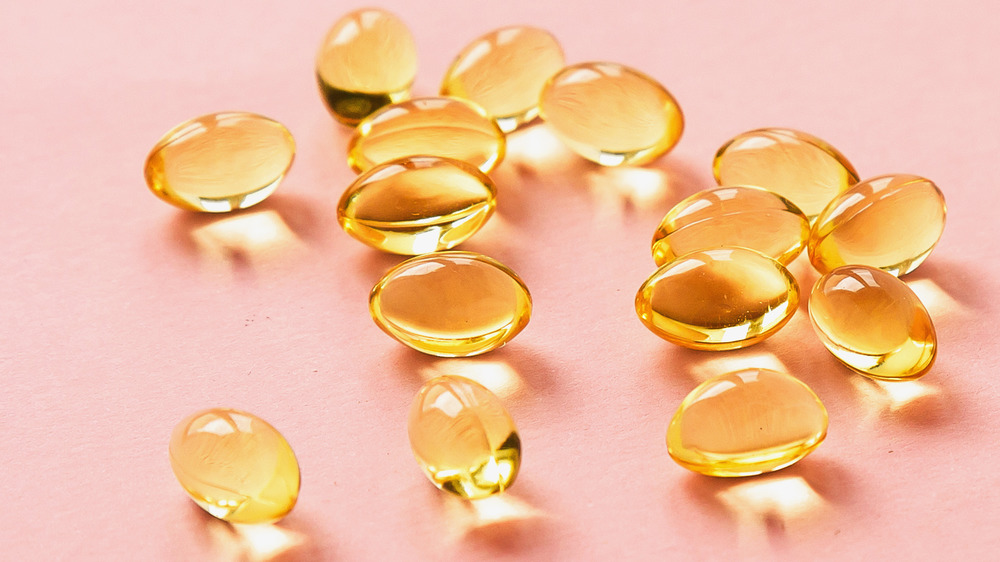Health Food Trends You'll Want To Try In 2021
Planning to get healthy in 2021? You're not alone. According to data from Archer-Daniels-Midland (ADM), 31 percent of consumers plan on committing to their health in the new year, while 50 percent of individuals said their desire for a healthier lifestyle will significantly impact their food and drink purchases in 2021 (via Food Navigator). "The pandemic has accelerated consumer interest in a more holistic approach to health," the company said in a release.
Forbes agreed with such predictions, suggesting that one of the biggest trends we're going to see in 2021 is a move towards healthy, sustainable, and environmentally-friendly eating. In 2021, we're not going to be so focused on restrictive diets and instead transition to a more mindful way of eating, predicted nutritionist Brigitte Zeitlin in an interview with Well+Good. "Mindfulness has been bubbling up for the past year or two, but I think COVID-19 has escalated the conversation," she explained.
If you're ready to put the dumpster fire that was 2020 behind you and focus on having a happy, health 2021, you're going to want to take a look at some of the biggest health trends to expect.
You're going to want to try the sous vide trend in 2021
Thanks to long days spent at home in 2020, cooking foods sous vide (pronounced "sue-veed") style has become a major trend that will continue into 2021.
Sous vide cooking, which involves packing food in an airtight container and heating it in a hot water bath, creates egg bites (among other foods) which are creamy and indulgent yet also low cal since they're cooked without additional fats. Starbucks helped to kickstart the phenomenon, introducing their Bacon and Gruyere Sous Vide Egg Bites in 2017. Following their success, grocery chains like Aldi and CostCo began selling similar egg bites.
Making sous vide eggs at home is almost as easy as buying them prepared. All you need is an immersion circulator designed to heat water to a specific temperature (below boiling) while your eggs cook. Combine eggs, cheese, and other fillings in small, greased mason jar then seal and let cook for about an hour. If immersion circulators sound too complicated, there are also a number of electric egg bite makers from companies like Dash and Hamilton Beach that allow you to make the egg bites directly on your countertop.
In 2021, more and more people will adopt a flexitarian style of eating
Not quite vegan, not quite carnivore, diets that combine the two principles — a movement that's been dubbed "flexitarianism" — will become the preferred way of eating for more and more people in 2021. Food and Wine has described flexitarians as "people who eat meat, but also eat vegetarian and vegan alternatives, too." Spurred not just by health reasons but also an increasing interest in animal rights and a desire to help to protect the environment, flexitarianism is a movement that's gaining more and more steam, especially with millennials. In fact, 60 percent of this generation expressed interest in adopting a flexitarian diet in 2018 (via Statista).
Thanks to movements like "Meatless Mondays," more and more people of all generations are open to merging vegan and vegetarian principles into their existing diets, according to a study from Nielsen. For example, the group found that a remarkable 98 percent of men and women who bought plant-based meats also reported buying regular meat. Food processing company ADM predicts that this trend will continue into 2021, revealing that 56 percent of consumers globally are making an effort to eat more plant-based foods and beverages, especially alternative plant-based proteins (via FoodNavigator).
You might find yourself craving a piece of plant-based jerky in 2021
Humans have had a thing for jerky for hundreds of years. The process of deboning meat, cutting it into thin strips, rubbing it with salt and spices and letting it dry in the sun dates back to at least ancient Incas in the 1500s, if not well before. The appeal is obvious: It's hearty, flavorful, salty, and above all, inherently portable. And now, thanks to a burgeoning new group of jerky producers, it can also be completely meat-free.
Yes, it's time to say goodbye to your favorite dried beef and turkey jerky. The jerky you won't be able to stop gnawing on in 2021 will likely be made out of vegan staples such as soy, mushrooms, jackfruit, seitan, and maybe even wheat protein.
In their forecast of foods to watch for in 2021, Whole Foods predicted plant-based jerky as one of the biggest potential new trends of 2021. And on a November 2020 episode of ABC's Shark Tank, Mark Cuban vowed to help make that trend come true, investing $300,000 towards the development of a vegan mushroom jerky company called Pan's. Other must-try veggie jerkies include Leaf Jerky, Upton's Naturals, and Savory Wild.
Eating to protect the Earth will be an even bigger trend in 2021
The movement towards a more planet-friendly way of eating has been gaining traction for years thanks to trends like eating locally grown, or consuming in-season foods to cut down on the energy used to get food to your plate. The idea is so pronounced, there's even a name for it: climatarian. The Cambridge Dictionary has described the word to mean "a person who chooses what to eat according to what is least harmful to the environment."
According to the New Hope Network, "Over two-thirds (65%) of consumers want to have a positive impact on the environment through their everyday actions." Based on this, they say, our desire to buy sustainably produced foods will only continue to grow in 2021.
Already, companies such as Panera and Just Salad have begun adding carbon footprint information for the foods they sell to their menus. If you are somebody that wants to protect the planet, making more sustainable food choices is one of the most impactful — and beneficial — things you can do, explained Laura Timlin, director of The Carbon Trust, to Discover. That's why this movement continues to grow, she said.
In 2021, much maligned carob will make a comeback
Carob was one of the most hated health food trends of the 1970s. The ripe pods, which are found on carob trees, contain a meaty pulp that can be dried, roasted, and ground into a powder. While it looks similar to cocoa, carob is less bitter and has a roasted, nutty flavor. And as The New Yorker explained, there's nothing really chocolatey about the stuff, which is why so many people despised it when it was introduced as a chocolate substitute.
Fast forward to 2021, however, and carob has a new lease on life. Today, companies are looking at carob as the next great all-natural alternative sweetener. Besides its natural sweetness, carob is packed with antioxidants and is naturally high in fiber. It's also caffeine-free and high in hydroxyproline, an amino acid that is said to improve collagen production, which can help keep your skin looking young and healthy.
Experts expect to see carob powder and syrup used in snacks and baked foods or blended into smoothies and other healthy drinks in 2021. "I wouldn't be surprised if Starbucks came out with a carob syrup," predicted food trends forecaster Elizabeth Moskow. "It gives an earthy, yummy, naturally sweet flavor."
Everyone will be all about chickpeas in 2021
Move over cauliflower. The vegetable of the year in 2021 will be the humble chickpea. No longer just the core ingredient in hummus and falafel, chickpeas (aka garbanzo beans) were called one of the food trends to watch in 2021 by Whole Foods, with the trendy grocery purveyor predicting they will soon be "popping up in products like chickpea tofu, chickpea flour and even chickpea cereal."
Chickpeas have already overtaken the pasta market, with Banza becoming the fastest-growing pasta brand in the United States (via FoodNavigator). The company's success has been so great, it raised $20 million in additional funding to help fuel further growth and expansion.
Why the newfound love for this ancient legume? For starters, chickpeas are nutritional powerhouses, packed with protein, fiber, folate, and phosphorus. They're also easy to prepare, über affordable, and have a hearty, satisfying flavor that works in everything from tacos to tapas. In addition to pasta, chickpea flour can be used in lower-carb breads and crusts. Even the water chickpeas are soaked in to soften has a use. Called aquafaba, his starchy liquid is a core ingredient in many dairy-free ice creams and other healthy desserts.
Meal delivery box kits will become even more popular in 2021
Subscription meal kits were already having a moment before 2020 kept us sequestered at home. These delivery box kits from companies like Purple Carrot and Blue Apron contain all the ingredients needed to make a balanced meal and are delivered right to your door. All you have to do is follow the instructions and you'll end up with a restaurant-quality meal, usually in 30 minutes or less.
As more people sheltered at home and avoided even going out for groceries, these meals exploded in popularity. The market consulting group Grand View Research estimates use of meal delivery services will continue to soar throughout 2021, with the industry reaching a value of nearly $20 billion by 2027. Industry news site Grocery Dive has reported that these box meal kits have become a huge hit with millennials, especially, thanks to their "ongoing interest in cooking at home and their awareness of food trends."
In 2021, you'll definitely want to have some halva
Foods that originated in the Middle East are trending widely for 2021. One of the most buzzworthy is a confection known as halva. Traditional halva comes in two forms: the gelatinous flour-based candy and the crumbly nut butter-based version made from sesame seed paste (tahini). It's the latter of these two delights that has health food fanatics so excited.
Based on the ongoing popularity of tahini-flavored everything — a trend that exploded in 2018 to become a billion dollar industry — it makes sense that sesame seeds remain trendy. At 2020's Specialty Food Association Trendspotter Panel, industry experts selected halva as one of the biggest emerging health food trends of 2021, with well-known foodie Ruth Reichl even calling it "good-for-you candy" due to its high iron content.
While traditional halva looks more like a block of fudge you would slice and eat, newer iterations include a halva butter made from tahini (or sesame seed paste) that can be spread on toast or crackers and eaten similar to peanut butter or Nutella, and shelf-stable halva slices that come in flavors like toasted coconut and triple chocolate and are similar to a low-sugar cookie.
You'll likely find yourself snacking on a sando in the new year
Tiny, crustless sandwiches called "sandos" have been a late night staple in Japan for years. Now, these crave-worthy, visually appealing crustless sandos are making their way across the United States. Yelp predicted that sandos will be one of the biggest food trends in 2021, writing, "[Sandos] have started to dominate menus and are making their way into our photo feeds. This year, expect katsu [breaded cutlet] sandos to be everywhere." According to Yelp, mentions of sandos on their site have increased by a remarkable 97 percent over the course of 2020.
As with American sandwiches, the variety of sandos you can create is endless. The one thing that ties them all together is the bread — fluffy, pillowy slices of shokupan or Japanese milk bread. Egg salad and pork katsu sandos are among the most popular variations. Although chefs have also started to upscale sandos with high-end ingredients like Wagyu beef, according to Thrillist, the beauty of a sando is that you can also make lean, healthy versions in your own kitchen.
Olive oil will be making a big resurgence in 2021
Forget coconut oil and avocado oil. Epect 2021 to be the year the original healthy oil: olive oil. Yes, it's time for olive oil to make a comeback. Olive oil is well known for its numerous health benefits. According to U.S. News & World Report, substances in the oil called polyphenols have been shown to lower blood pressure, reduce inflammation, and increase levels of HDL ("good") cholesterol in the blood.
The discovery of a new compound called elenolide within olive oil may help to further cement its reputation as the healthiest oil around. According to research published in the Journal of the Science of Food and Agriculture, elenolide has been found to have antihypertensive and anti-inflammatory properties, both of which further demonstrate it's powerful heart protecting powers.
With the increased focus on olive oil these studies have brought about, food trend forecaster Elizabeth Moskow told Food Business News that it's only natural that we'd see the focus on healthy oils shift back to olive oil in 2021, with more and more chefs, recipe developers, and manufacturers returning to it in place of formerly trendy alternate oils.
In 2021, you might find yourself chilling out after a hit of copaiba
After years of seeing CBD oil infused into everything from face lotions to lollipops, get ready for some competition to arise in 2021 in the form of a similar oil called copaiba. According to Food Business News, this essential oil, which comes from the sap of a rainforest tree called the Copaifera, packs many of the same chemicals as CBD and should therefore have similar widespread appeal.
Although research into the health benefits of both CBD and copaiba is limited, both compounds appear to help reduce inflammation and lessen pain and anxiety, making people who consume either substance calmer and more at ease. "In case reports, individuals with joint pain and inflammation who used copaiba reported favorable results, however, this hypothesis is promising but as of yet unproven," Charles Hennekens, a professor of medicine at Florida State University, told ScienceDaily.
"We think we'll see copaiba as a competitor to CBD in food and beverage products," food trend expert Elizabeth Moskow told Food Business News. With copaiba also being far less expensive than CBD, and having no impact on drug tests, we don't doubt her prediction.
Birria tacos could be your favorite new food in 2021
Imagine tender flaky beef, pork, goat or oxtail stewed in a hearty mixture of peppers, onions, and other spices for hours on end. That's birria. And in 2021, food trend forecasters predict it will increase in popularity. The low-cal, protein-packed dish is big in the Southwest and was even featured on Netflix's Taco Chronicles. According to Yelp, searches for birria on their site increased 235 percent in 2020.
Birria (pronounced "beer-ya" with a rolling "r") originated in Jalisco, Mexico. Typically served like a stew, birria generally arrives at the table covered in the juice it was cooked in. Some diners eat the meat as is; others pull the meat out of the stew, build a taco, and then dip the taco back into the remaining liquid before eating.
Besides its delicious taste, it's also social media friendly, which has only helped to make it a phenomenon, said Angelo Orona, who runs the popular Facebook group Tacos of New Mexico. "It's very photogenic," he told Albuquerque's KRQE. "When you see people consuming and eating birria, they're typically dipping it in this really savory sauce and it just looks great."
In 2021, you might find yourself getting buzzed on hard kombucha
Drink developers may have finally found a way to make kombucha a bit more palatable. They've spiked it, turning the health food staple alcoholic. For those who haven't tried it, kombucha is a tart, slightly sweet, effervescent fermented tea created centuries ago in China. The tea is an excellent source of probiotics that aid in digestion. It's also full of vitamins C, B6 and B12, and acetic and lactic acids (via WebMD). In 2019, the global market value of kombucha was estimated at $1.36 billion, according to database company Statista. By 2026, experts believe that number will grow to an estimated $8.15 billion.
Similar to a hard seltzer or hard cider, hard kombucha is exactly what it sounds like: fermented tea with added alcohol (around 4.4 percent ABV, about the same as a light beer). Sales for what some have dubbed "hard booch" are driven by people looking for a lower-calorie, healthier alternative to beer and traditional cocktails.
Business for hard and regular kombuchas that Stephen Finn, vice president of strategy and communication for Wild Tonic hard kombucha, told Market Watch in October 2020, "We expect volume will continue to grow and that our business will at least double every two years for the foreseeable future."
You'll probably up your vitamin D intake in 2021
Vitamin D deficiency has been an ongoing problem in the United States for decades. Still, people in the U.S. continue to get too little vitamin D, primarily as a result of poor diets low in Vitamin D-rich fish and dairy and limited exposure to the sun (via Scientific American).
Of course, spending more time at home in 2020, didn't exactly help improve matters. Equally worrying, a study published in the Journal of the American Medical Association suggested a possible link between COVID-19 infection and vitamin D deficiency. In the study of 489 men and women, 80 percent of individuals with inadequate levels of vitamin D in their blood also ended up testing positive for the virus (via Healthline).
Industry forecaster Market Research has predicted increasing demand for Vitamin D and other immunity-boosting supplements (like elderberry, echinacea, astragalus, garlic, and andrographis) in 2021. According to their data, more than 50 percent of consumers have reported taking more supplements in 2020, and plan to continue that trend into the new year.

